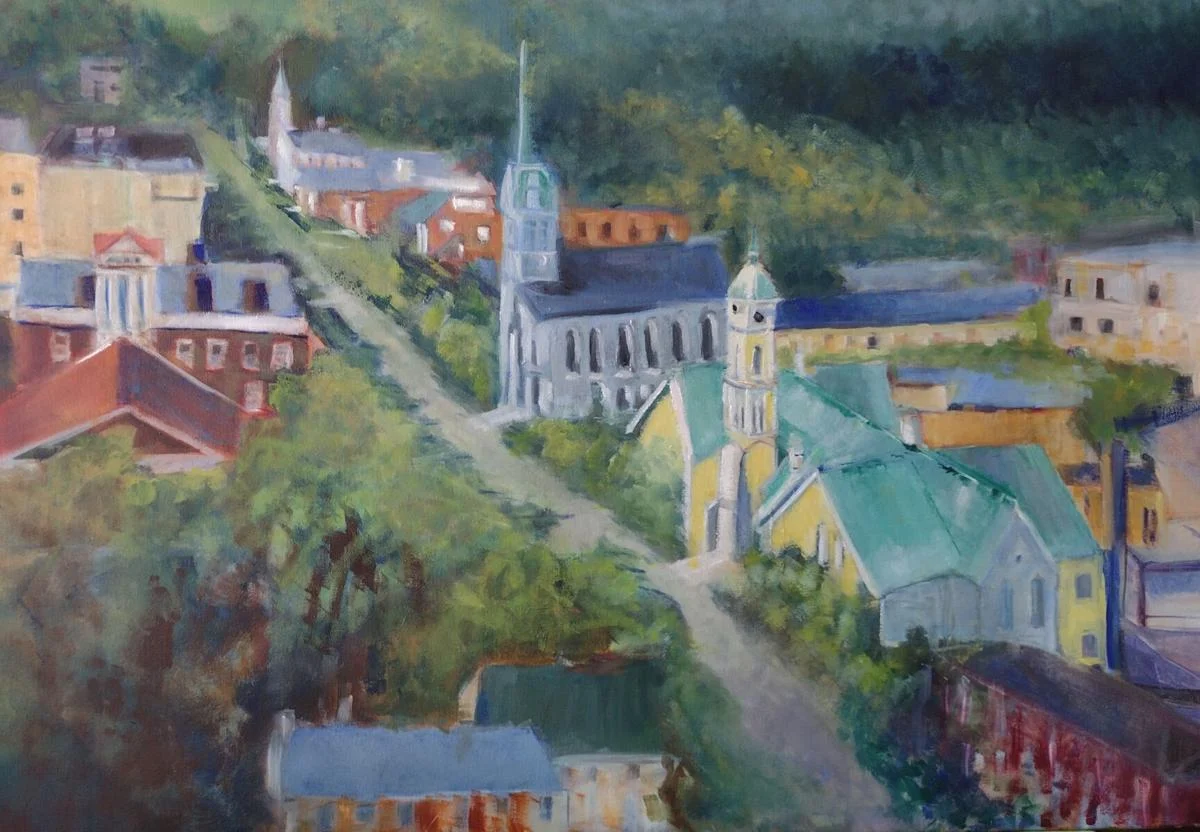The Renwick Courthouse is my favorite building in Fredericksburg. I have loved it since I moved here thirty years ago. I love its elegant modesty, built in the nineteenth century for an emerging, important city, still surrounded by gorgeous land and farming communities. It is both grand, like the high idealism brought to the Neo-Gothic cathedrals and government buildings in the capitals of Europe, and warm, like the country houses and churches in Sweden or the Cotswold Cottages in England. Our building has flying buttresses, a rare detail in Virginia, and a charming cupola with a bell from the famous Revere foundry. It has tall arched windows, and steep roofs. Inside, ceilings soar, even as the scissored timbered ceiling beams feel warm and sheltering.
Some brilliant Fredericksburgers hired James Renwick, who became one of the most prominent American architects in the world, to design our courthouse in 1852. It was early in his career, but already Renwick was becoming famed for integrating Gothic and Roman architecture, among other styles in his buildings. He designed the Smithsonian Building and Trinity Episcopal Church in Washington, St. Patrick's Cathedral in New York, and influenced Gothic revival university architecture all over the country. Think Princeton, Duke University, Yale University, Notre Dame, and many many more. We were so fortunate to have him work here, in Fredericksburg. Of course, we have stellar examples of Early American architecture here, especially Federal and Georgian styles, and we are even proud to think of ourselves as the most historic small city in America. But as historian John Hennessy has written, “the Renwick Courthouse is perhaps the most important, impressive piece of architecture in Fredericksburg,” and “one of the finest Gothic courthouses in the mid-Atlantic states.”
Being in that courtroom to serve on juries until recently has been a privilege for our citizens. Throughout its more than 150 years, the court stage and pews and wooden jury box seats hosted dramatic scenes of slave trials, secession decisions, speeches of famous officials and the everyday interpretation of justice that make a city work.
I hope we can find the funds to preserve what this building is, and not let it become a shell of what it was. If we consider uses for it that are characteristic of its history, we might avoid stripping it to create a blank slate for development of only the purposes of generic hotels, apartments, and shops. It is important to obtain Historic heritage tax credits and foundation donations. But we might think of specific uses that might inspire investment or sponsorship. Film and broadcast companies might find a renovated Renwick attractive for historic movies and courtroom dramas. Schools could lease it to hold mock trials and field trips on civic lessons. Colleges could rent the space to teach architecture. Its rehabilitated walls could be leased as space for art shows and galleries. Its stage is ideal for lease as a playhouse. Our Sister City Programs, and many others, which are envied, but often itinerant, could hold events there and have space for meetings. I hope we will find the energy as a city to avoid the false dichotomy between commercial generic use versus cultural use. This vision requires that we prioritize the sponsored care of the gem that we have.
Wendy Atwell–Vassey is a retired local professor and a longtime Fredericksburg resident.
Originally published in The Free Lance-Star
